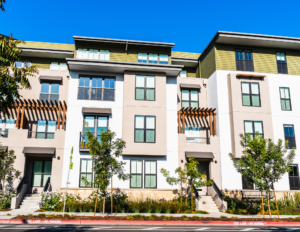In the world of investing, real estate remains one of the most tried-and-true ways to generate long-term wealth. Property ownership is a reliable way to build wealth through capital appreciation and consistent cash-flow. But people who want to passively invest with a real estate sponsor or syndication might wonder how they can protect their capital.
A sponsor or asset manager might offer to hedge the investor’s risk by structuring partnerships that include a preferred return, commonly abbreviated as “pref.” So, if you’ve ever wondered about the prefs meaning and how it works, dive in.
Preferred Return Meaning
A preferred return is a percentage of profits the investor and the sponsor (or general partner or asset manager) agree to be paid before any cash flow is distributed to the sponsor. The percentage is based on the investor’s capital investment and minimum required rate of return.
What Is a Preferred Return in Real Estate?
Let’s use an example. When a sponsor enters a 6% pref agreement with an investor, the sponsor pays 6% of the investor’s capital investment as a distribution before any other distributions are made to the sponsor. This initial distribution incentivizes the sponsor to achieve a return above a mutually agreed upon benchmark to earn their portion of the profits.
So, if a limited partner invests $100,000 toward the purchase of a property that had a net operating income of $20,000, the investor must be paid the first $6,000 of profits. After that, the sponsor and investor share the remaining $14,000 – typically in a percentage split (60/40, 40/40, etc.).
Pros and Cons of Preferred Returns in Real Estate
Now that we’ve broken down a basic example of a preferred rate of return, we should tell you sponsors take on some risks with prefs, like non-guaranteed profits. Let’s say a property performs poorly due to high vacancy or a spike in maintenance and repairs costs. The property’s cash flow might not reach the investor’s required rate of return.
Still, preferred returns are common investment structures between real estate sponsors and investors. Here are a few reasons why:
- They give the investor peace of mind, knowing that they’ll have priority when it comes to profit.
- The sponsor is willing to guarantee a percentage of the investor’s initial investment because they believe in their ability to make the property profitable.
- The sponsor is heavily incentivized for the property to perform positively. The sponsor is motivated to surpass the investor’s required rate of return so they can cash in on post-preferred return splits.
A promise of a preferred rate of return is an ideal way for sponsors, asset managers, and syndicators to attract investors and create a mutually beneficial partnership.
Preferred Return vs. IRR
The internal rate of return, or IRR, is a way to measure the compounded profit an investor receives over a certain period of time, presented in the form of a percentage. Since a preferred return is merely a required rate of return the sponsor and investor agreed upon and doesn’t factor in additional collected profits, an IRR is a more accurate representation of an investment’s performance.
How You Can Earn a Preferred Return with D3 Real Estate Group
A preferred rate of return is a great tool to attract investors seeking a risk-adjusted return on their capital. Investors are incentivized to surpass their partners’ required rate of return so they can start participating in profit distributions.
With D3 Real Estate Group, partners can take advantage of investing alongside experienced real estate operators while also mitigating risk with a preferred return structure. Contact us today to learn more about how you can passively reap the benefits of investing in real estate.




